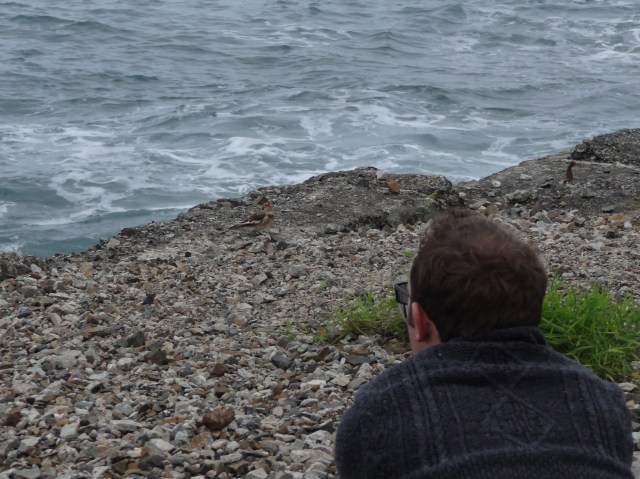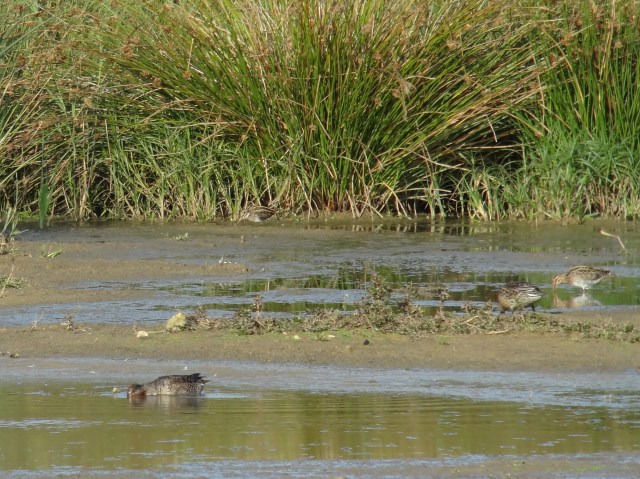Having spent the best part of a day and a half chasing the Pallid Swift we decided that today we’d take it easy. After a relaxed breakfast we headed down to Winterton, hopefully for me to add Shore Lark to my year list – Jane having already seen them a few days before. We stopped off at the bushes below the Hermanus restaurant to check for the reported Pallas’s Warbler but there was no immediate sign so we continued to the beach in search of our quarry. A single adult winter bird, there had been three earlier in the week, was quickly located feeding at the base of the dunes. We watched it for ten minutes or so before heading back to the Hermanus, where the Pallas’s was showing occasionally. Having got rather ‘thin’ views we returned to the car and set off to our next stop at the beach car park in Caister-on-sea, where the juvenile Rosie Starling was seen almost immediately, first on the roof of a nearby cottage and then feeding on the grass by the side of the car. We then followed the coast road north as far as Happisburgh, where we stopped for Sunday lunch, at the excellent Hill House pub, before continuing northward. A couple of texts alerted us first to a possible Pacific Swift and then a possible Black-browed Albatross at Hopton, both heading north – so we decided to stop off at the beach car park at Walcott in the vague hope of seeing either bird fly by! Nothing doing, except a number of cheeky Turnstone on the sea wall, so we pressed on towards Trimmingham to see if we could perhaps connect with the Pallid Swift, which was still around. There were a few cars in the lay-by but no birders so we pressed on to the cliffs at Cromer, where the birds had been seen on the three previous late afternoons. News of a Richard’s Pipit at Cley was enough to lure Jane away but I decided to stick it out. After an hour or so of getting blown about and seeing nothing our interest was rekindled by a telephone call to one of the guys standing with me, saying that a Black-browed Albatross had just flown past Overstrand, two miles down the coast! We stared out to sea and after a couple of minutes I became aware of a large black and white, long winged, bird wheeling and ‘towering’ above the horizon – not a gull nor a Gannet, I felt pretty confident that this was our bird. I got the guys on it as it started powering away to the north but less than great views were had before it was finally lost from sight. Unfortunately, Jane returned from a fruitless trip to Cley just at that moment – she felt sick… and so did I!!
A very nice Shore Lark to get the day off to a great start
A second ‘Pink Stink’ in as many weeks
One of those cheeky Turnstones
And to finish with Horsey wind pump, against a threatening sky… aaah!
Poscript: Apparently the Albatross was seen a little further round the coast from West Runton, but not from Sheringham, before it obviously disappeared to the north.






















